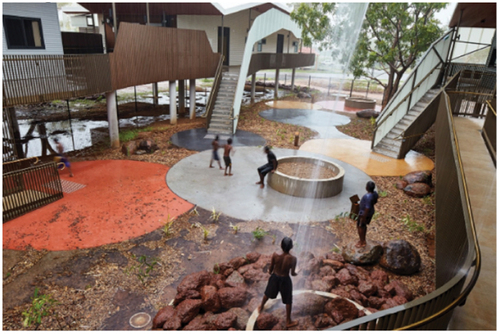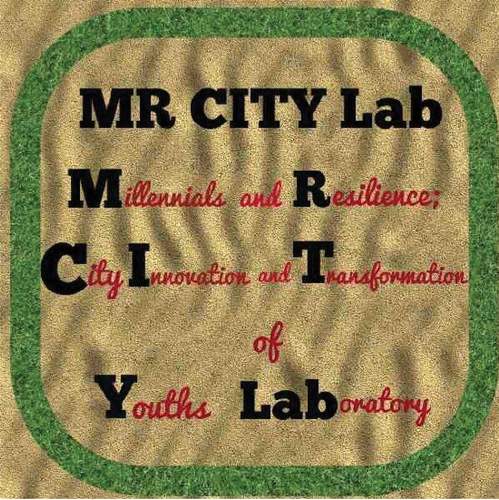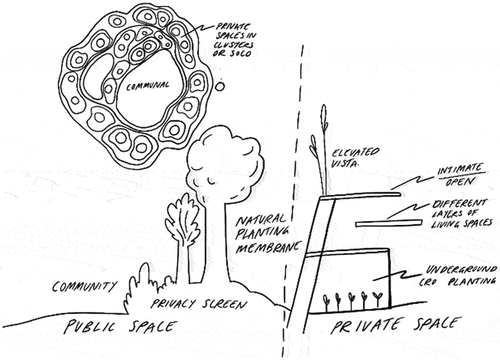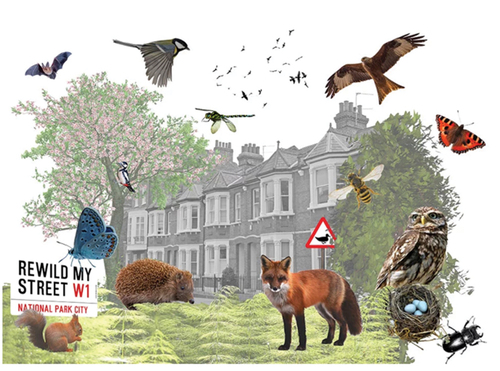SUPPORTING CITY KNOW-HOW
Human health and planetary health are influenced by the urban environments we have created. For both human and planetary health, trends showing a current decline and ongoing risks are leading to increasing concern globally. It is imperative that finding solutions becomes a core focus for urban policy. This will require concerted action. The journal Cities & Health is dedicated to supporting a multidirectional flow of knowledge to help make this happen. We wish to foster communication between researchers, practitioners, policymakers, communities and decision-makers in cities. This is the purpose of this section, and the short ‘City Know-how’ articles in the journal. The team Cities & Health and our knowledge partners (the International Society for Urban Health and Salus.Global) invite you to be part of these conversations, interact with their networks, authors and communities; and to consider publishing in Cities & Health to influence urban policy.
This special issue of Cities & Health comprises a collection of articles focusing on biophilic cities. The question is does humanity’s connection to nature have a role in supporting and, maybe even in creating, health in urban areas?
In this issue, you will first find an agenda-setting leading editorial, followed by a commentary. We have then included five empirical-based articles plus a conceptual article and an article looking at research methods in the context of re-wilding. Through their variety, these, together with a leading editorial, provide an introduction and insight into thoughts and research in the field of urban biophilia. Here, you will find relevant knowledge and lessons for urban policy and practice.
To assist with application to urban policy and practical advice, most of the findings from the research studies have been distilled in this ‘research for city practice’ article as accessible ‘City Know-how’ briefings.
We invite you to scan this wealth of content. There are many shared urban problems; however, there are also solutions already being tested and others waiting to be discovered.
As a journal, we welcome contributions from all readers. This may include conjectures, commentaries and debates arising from papers or from your own case studies. Let us make human settlements healthier and more equitable for communities and healthier for the planet.
Innovative and fun-like native tree restorations for millennials in Kano, Nigeria
Going by the current trends of urbanization in Africa, it is necessary to seek new ideas to improve ecology, human health and well-being. ‘MR CITY’ is an innovative lab at Beyero University in Kano, Nigeria, for millennials with promising ideas on how to recreate urban greenery and the biophilic.
Importantly, ‘MR CITY’ Lab seeks to guide policymakers to achieve some targets and indicators of the Sustainable Development Goals, the New Urban Agenda and international climate targets such as the Paris Agreement.
For the attention of: Policymakers, academics, urban planners, environmentalists, traditional titleholders, local and international development partners, NGOs and residents.
The problem: Kano is a city with a historic importance attached to the Hausa-native trees. Interestingly, some neighbourhoods in Kano actually received their names from native trees. Regrettably, urbanization has seen many of these native trees severely depleted with others disappearing completely from the neighbourhoods that are named after them. It is reported that young people from such neighbourhoods cannot even identify or name such trees at sight because they do not know them.
What we did and why: The project restored 17 different native tree species by planting a total of 61 native trees in all the locations where a depleted native tree was thought to have stood (neighbourhoods, open spaces, public schools, etc.) in order to recreate the historic biophilia of urban Kano. Geographical coordinates of each of the restored trees were taken using a hand-held GPS device as a way of tracking the precise location of each restored tree.
What our study adds: This was the first attempt at using innovative labs in Africa to incubate ideas by assembling academics, experts, students and communities to co-design solutions on how to successfully restore some depleted native trees in Kano. The findings also highlight the importance of sex-based inclusion in the project and nature-based solutions in urban ecosystem restoration and sustainability.
Implications for city policy and practice: Our study findings suggest that the success of the project, especially its implementation, cannot be fully and effectively achieved without the inclusion of all stakeholders in the design and policy-decision process.
For further information: See MR CITY LAB. For Millennials to restore urban biodiversity in Kano city through planting of local tree species. Tweeting at @MR CITY LAB.
Full research article: Recreating African biophilic urbanism: the roles of millennials, native trees, and innovation labs in Nigeria by Aliyu Salisu Barau, Kamil Muhammad Kafi, Abubakar Bawa Sodangi & Suleiman Gambo Usman.
Connecting Land: a transdisciplinary workshop to envision nature-connecting habitats
Envisioning a socially and ecologically sustainable human habitat.
For the attention of: Landscape architects, environmental educators, city planners and sustainability practitioners and scientists
The problem: There is no established agenda to create sustainable urban environments that combine bio-physical and socio-cultural dimensions. Consequently, many urban environments suffer from lack of direct nature experiences, insufficiently integrated ecosystem services and narrowly considered public health and well-being in urban design.
What we did and why: We explored the basis of a transdisciplinary agenda for nature-connecting human habitat, i.e. an ecologically sustainable habitat that promotes a cultural connection between people and nature. We create an explorative vision for sustainable human habitats that integrate personal, social and environmental factors and then identify actions and synergies to achieve it.
What our study adds: The collective vision suggests a variety of psychological, physical, cultural and environmental attributes that interplay with each other. Next door nature routines are essential to create nature-connecting habitats. The consequent co-benefits with nature-based solutions are many as is the potential to support Sustainable Development Goals.
Implications for city policy and practice: Given the wide range of actors benefitting, further exploration and planning of future human habitats would benefit from including many different actors, such as local officials, educators, lawyers, ecologists, landscape architects and even medical doctors – through social prescribing; and of course, local communities!
Full research article: Connecting land. A transdisciplinary workshop to envision a nature-connecting human habitat by Matteo Giusti (@matteogiusti), Wenpei Wang & Tanya Marriott.
The Jerusalem Railway Park: ‘Greening Our Backyard’
Our Jerusalem Railway Park study addressed the needs of those aged 55 in disparate communities, with long-term implications for physical and mental health and community vitality.
For the attention of: City planners, transportation experts, residents, educators, environmentalists, real estate interests, developers and politicians.
The problem: In a city associated with tension, violence and religion, for those living in proximity to Jerusalem Railway Park, a ‘Rails to Trails’ initiative, can feel like a safe and peaceful bubble. One where users can walk, run, cycle, feel removed from motor traffic and even imagine that they live in a rural environment. User communities include Arabs and Jews, religious and secular, upper, middle and lower class families, elderly, middle-aged and young.
Yet in this area, physical activity levels meeting the WHO guidelines are especially in low in low-to-middle socio-economic status communities for adults aged 60 and above.
What we did and why: In this study, we sought to understand the perceptions of those 55 and above-aged regarding an environmental change in their neighbourhood. How it frames their lifestyle choices.
We used a mixed-methods approach to understand how residents of seven diverse nearby neighbourhoods were affected by a renewal this long-abandoned. In this work, we created an eight-branched conceptual model capturing the main perceptions raised.
What our study adds: Our study of Jerusalem Railway Park contributes to the understanding of bottom-up community engagement in creating new dialogue between public and municipal authorities for changing urban environment for community health. We also found that:
Proximity to the Jerusalem Railway Park was reported as helping to preserve or improve physical activity habits and was supported by multidisciplinary ecological dimensions.
Self-reported quality of life improvement may help reduce psychological barriers to physical activity and active living in elder ages.
Implications for city policy and practice: In terms of practice, our study showed how citizen ownership and creation of feelings of familiarity among the elderly, and respecting history of the place for all local cultures might, can be used as basis for future physical activity interventions; especially among non-active populations or lower-middle-income communities. This is also a case study on bridging diverse communities using the common goal of working towards healthy and safe cities for all.
Full research article: ‘Greening our backyard’- health behavior impacts of the built environment within the overall ecology of active living by Iva Greenshtein, Osnat Keidar, Chariklia Tziraki & David Chinitz.
Designing, building and managing aged care facilities: A new approach grounded in biophilic design
Rain waterfalls, patterns of dappled light and visual connections with nature. The Walumba Elders Centre (Warmun Community, Western Australia, 2014). Photographer: Peter Bennetts.

Our paper calls for changes in how we design, build and manage aged-care facilities. A vision for biophilic cities must consider population ageing and the importance of designing biophilic aged-care facilities.
For the attention of: Aged-care architects, planners and designers; aged-care developers; aged-care provider consumers; aged-care health professionals; and policymakers.
The problem: Despite significant change in how long-term aged care is delivered, moving away from a formal medical model of care and toward person-centred, consumer-directed care that recognises and supports residents’ autonomy, the dominant cultural narrative about aged care remains predominantly negative. Stigma surrounds any decision to move to aged care: older people are afraid of ‘ending up there’; families feel guilty for considering aged care as an option; and many health-care professionals view aged care negatively.
What we did and why: Emphasising the value of connections with nature and living systems, we have positioned biophilic design as the key conceptual framework to transform stereotypical aged care environments into calming, restorative and aesthetically pleasing places. Drawing on Browning, Ryan and Clancy’s ’14 Patterns of Biophilic Design’ framework as a guide, we completed an architectural assessment of three award-winning aged care facilities in Australia, which illustrate that biophilic design principles are, in fact, guiding contemporary best practice.
What our study adds: While innovations in information and communication technology mean many more people will age in place in their own homes, for the foreseeable future, residential aged care facilities will remain an important part of the care system for the frail and aged. Population ageing means more aged care facilities will be designed, built and managed, with this paper arguing for a new biophilic vision—an approach which would benefit residents, staff, visitors and local neighbourhood communities.
Implications for city policy and practice: As biophilic design discourse and practice remains rare in aged care, our hope is that this paper triggers a reflective conversation between architects, developers, policymakers, consumers and care providers about the value and potential of a biophilic approach. Just as aged care providers are now increasingly seeking to engage with new technologies and to understand sustainable design approaches, awareness, consideration and integration of biophilic design principles into aged care facilities must become a mainstream approach.
Full research article: Redesigning aged care with a biophilic lens: a call to action by Evonne Miller & Lindy Osborne Burton.
Understanding how to change behaviour to improve the rewilding of urban private gardens
City residential streets offer an opportunity to give back to nature, making changes to make them a habitat for wildlife. Our study investigated the behaviour of rewilding urban private gardens.
For the attention of: Urban leaders at both regional and local levels
The problem: Londoners can adapt, change and transform, their gardens to positively impact on biodiversity. This behaviour requires a conscious effort to reverse the trend of loss of green space. London’s residential gardens offer an opportunity to increase biodiversity by making small adaptations to turn them into a habitat for wildlife. Altering these spaces to accommodate nature could significantly contribute to London fulfilling its aims as a ‘National Park City’.
What we did and why: This research aims to investigate rewilding behaviours in relation to changes to private gardens within Greater London to improve biodiversity. This research will synthesise the existing literature on intent-orientated urban rewilding; conduct mixed-methods research including interviews and a quantitative survey to understand the capability, opportunity and motivational factors influencing urban rewilding behaviour; and develop an intervention strategy to change behaviour in relation to adaptations to urban private gardens.
What our study adds: With urbanisation increasingly coupled with a worrying trend in the reduction of vegetated green spaces in London, facilitating behaviour change in the rewilding of London’s private gardens is important to support biodiversity; this research project contributes to this important topic.
Implications for city policy and practice: The results of this research will allow urban leaders, local and regional, to identify approaches to improve the rewilding of urban private gardens to improve biodiversity. In London, altering such spaces to accommodate nature could significantly contribute to London fulfilling its aims as a National Park City.
For further information :
Rewild My Street provides guidance for people wishing to adapt their homes, gardens and streets to encourage wildlife.
Full research article: A study protocol to understand urban rewilding behaviour in relation to adaptations to private gardens by Justin Webb & Siân Moxon.




